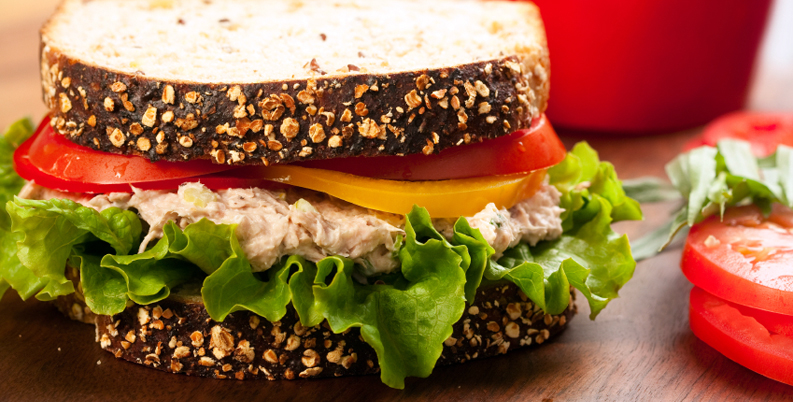Meredith Epp, Communications and Commercial Officer for MSC Oceania, learns about the legwork behind her sustainable tuna lunch.
Tuna is pretty much the staple lunch food at our office. It’s simple, healthy – and with the blue MSC label I know it’s sustainable. Just throw it in a sandwich or toss it into a salad and you’re good to go. But it wasn’t until I started working here that I realised how much goes into getting my little tin of tuna from the ocean to my salad bowl.
Fun fact: seafood is one of most traded commodities in the world, ten times more than coffee, or rice. That’s a whole lot of fish flying around and makes me wonder where my little tin of tuna came from and, since I’m eating it about four times a week, what kind of impact it has on our oceans.
No lazy fish
It turns out tuna are what’s called a highly migratory species. They swim long distances and skipjack tuna, like the one I’m eating, are often found in waters in-between nations. While travelling through tropical waters sounds like a dream holiday, for regulating bodies trying to monitor and manage these fish stocks it’s a big job. For example, the Parties to the Narau Agreement (PNA) are a group of eight island countries that joined together to manage their skipjack fishery at a sustainable level.
Tuna and the MSC
Imagine trying to manage your catch when you have at least eight different nations trying to work together on a fish that swims fast and, of course, lives underwater… Not an easy task. But that’s why the MSC certification was so important to the PNA.
The MSC Fisheries Standard – the backbone of our organisation – is founded on three core principles; stock health, impacts on the environment and management. As the world’s largest tuna fishery, good management is vital for the PNA operation.
Good management in turn influences outcomes on the other two MSC principles. For example, the fishing method behind MSC certified tuna caught in the waters of the PNA nations completely excludes the use of fish aggregating devices, or FADs. Every PNA vessel on the hunt for MSC certified tuna must have an official MSC trained independent observer on board, checking that it’s abiding by the regulations and by the MSC’s chain of custody requirements. These include science-based limits on the quantity of tuna that can be harvested, size restrictions, complete segregation during fishing trip and transhipment and bans on fishing in certain sensitive areas.
In fact, the PNA fishery goes beyond the MSC’s already robust requirements. They use satellite tracking and batch coding, ensuring that you can trace your tuna right back to the vessel that caught it. Add this to the fact that all fish sold with the MSC label must be kept separate from non-certified fish, and I can always feel confident that the tuna in my sandwich or salad can be traced to a sustainable fishery.
Change Makers
John West Australia recently unveiled their success in making their skipjack range MSC certified. In 2012 the company committed in to source only purse seine, FAD-free caught skipjack tuna by 2016. Following this, the company’s procurement team worked tirelessly alongside WWF Australia to secure sustainable tuna supplies for their consumers. Around 97% of their skipjack is sourced from the Western Central Pacific.
This is a tremendous step for Australia as tuna is one of the top five most consumed proteins and John West one of the most popular and widely available brands. 90% of seafood consumers including myself, say ocean sustainability is important so it’s great to see companies putting in the hard work to provide sustainable choices available for their customers. With big commitments from commercial companies, come big impacts.
A lot of time, resources and serious science go into making sure that what I eat for lunch today will allow me to eat tuna in the future. But come lunch time, I just look for the little blue label and add olive oil.
Meredith’s Simple Sustainable Tuna Salad
- Large bowl of rocket or spinach
- Tin of MSC certified tuna (in olive oil is my preference)
- Half of an avocado
- Handful cherry tomatoes
- Half a mango or strawberries
- Drizzle of high quality olive oil
- Sprinkle of sea salt

